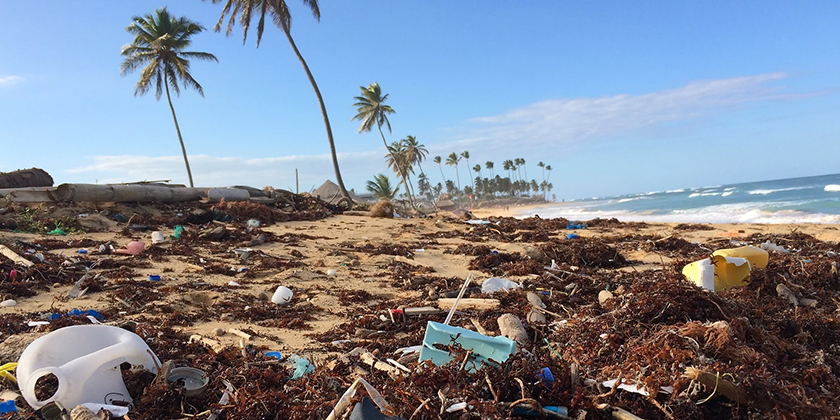The plastics treaty is coming. Investors who act fast will reap the biggest rewards
-

-
Ellen Martin
-
March 28, 2022
-
4 min read

Ellen Martin
March 28, 2022
4 min read


On March 2, we welcomed the resolution from 175 nations to begin creating a landmark, legally binding treaty that aims to address the global plastic waste crisis. Governments, businesses, NGOs and the non-profit sector have invariably agreed that the plastic pollution issue needs to be addressed, not only from a waste management perspective, but also as a significant opportunity to unlock the plastics circular economy and a key path to reaching the world’s climate goals.
We know that there are currently 150 million tonnes of plastic in the ocean, with another 11 million tonnes added every year. Without significant action, that figure is estimated to reach 29 million tonnes per year by 2040. We also know the range of upstream and downstream solutions that will help us solve this issue. But what we lack is the investment needed to scale these solutions, foster further innovation and develop the infrastructure that will help us create a true system change as we move to a circular plastics economy.
In fact, we are lacking US$1.2 trillion: this is the financing gap that exists in infrastructure and innovations to get to scale by 2040.
But how do we meet that financing gap? What has been holding investors back?
A set of factors, such as the uncertainty and perceived risks of investing in waste management and recycling in emerging markets, the lack of an evidence-based track record and intermediated or blended financing mechanisms, have previously prevented investors from deploying capital into available solutions. However, that is changing.
A new toolkit released by the World Economic Forum’s Global Plastic Action Partnership (of which The Circulate Initiative and Circulate Capital are partners) demonstrates how private capital can unlock opportunities in the circular economy. Focused on the downstream investments being made in plastics waste management and recycling, the toolkit showcases examples of how capital – from a variety of sources – is being mobilized to ensure plastic waste is recovered and recycled.
It highlights that voluntary corporate action, supportive policy frameworks and thematically relevant finance mechanisms are all setting the stage for a greater commitment of private capital to address the plastic waste challenge and advance the circular economy.
Included are case studies of brands and strategic investors in the plastics value chain that are boosting demand and supporting a more circular economy for plastics, such as Coca-Cola FEMSA’s scale-up of recycled PET infrastructure in Mexico, which saw multiple rounds of financing in different forms and from different sources.
In addition, the toolkit notes the critical role policy plays in mobilizing private capital, and how it can stimulate investor interest by supporting a cohesive ecosystem for plastics, incentivizing investment, and reducing risk. The Government of Indonesia’s innovative climate and SDGs-related debt instruments are clear examples of environmentally focused capital that can lead us to scaled circular infrastructure.
Investors can also take comfort from what has been achieved in analogous industries, as seen in the SUNREF program focused on scaling renewable energy in emerging countries including Nigeria, making the pathway to success for plastics circularity clearer.
But what strikes me as a critical takeaway from each of these cases is that we need the full ecosystem of actors to work together to create true impact. Whether government accelerating policy levers, development finance institutions or impact investors expanding financing to new solutions, or mainstream financial institutions contributing follow-on financing to scale infrastructure, each stakeholder has a role to play in driving change and encouraging greater investment in plastics circularity.
With negotiations commencing for a deal to be agreed by 2024, it’s clear that now is the time for global financial institutions and other investors to seize the moment and join in. While a global treaty to solve plastic pollution further increases certainty and reduces risk, the opportunities are increasingly coming into view and those investors that don’t move fast will be left behind.